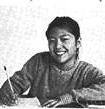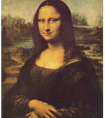Twenty-three-year-old Michael Phelps has become a phenomenon (神话) in swimming.At the 2008 Summer Olympic Games, he won eight gold medals. That was more than -九年级英语
题文
 Twenty-three-year-old Michael Phelps has become a phenomenon (神话) in swimming. At the 2008 Summer Olympic Games, he won eight gold medals. That was more than the whole Australian team could put together. He beat (打败) Mark Spitz’s 1972 record of seven wins in the pool at the one Olympics. Phelps has put his name next to seven world records. Nine days, 17 games, morning and night he competed and won. He had to beat former (从前的) world record-holders and gold medalists. He had to turn their wins into old news. Michael Phelps started to swim at the age of 5. Guess which stroke (动作) he first tried? The backstroke. It’s because he didn’t want to put his face in the water. By the age of 7, he had taken part in a lot of swimming competitions. At 11, he met Bob Bowman who saw the kid’s great talent. How did Phelps become so good? He was born with the body of a swimmer. He stands 1.87meters high and has a wide wingspan (臂展). He knows how to use his body to full advantage. His hands and feet are like paddles (踏板) in the water and he has a strong kick. But that’s not all;he also has the heart and will to win. He thinks that anything is possible as long as you put your mind to it. Swimming is Phelps’ life. Every day he spends five hours in the water, swimming about 11 kilometers. He never takes a day off. This is a young man who knows what he wants. “If I didn’t swim my best, I’d think about it at school, at dinner, and with my friends. It would drive me crazy,” he said. “There are no limits (限制). The more you dream, the further you get.” 小题1:Who did best in swimming at the 2008 Summer Olympic Games?
|
答案
小题1:C 小题2:D 小题3:C 小题4:C 小题5:D |
试题分析:这篇短文主要介绍了美国著名运动员菲尔普斯,告诉我们他除了有很好的身体条件以外,坚强的意志和刻苦的锻炼是他成功的秘诀。同时提醒我们只要你全身心的投入,一切皆有可能。 小题1:根据短文第二段At the 2008 Summer Olympic Games, he won eight gold medals. That was more than the whole Australian team could put together.描述,可知选C。 小题2:根据第三段Nine days, 17 games, morning and night he competed and won. 描述,可知选D。 小题3:根据第四段The backstroke. It’s because he didn’t want to put his face in the water.描述,可知选C。 小题4:根据短文第二段描述,可知他赢得八块金牌,打破七项世界纪录,故选C。 小题5:根据But that’s not all;he also has the heart and will to win. He thinks that anything is possible as long as you put your mind to it.及上下文描述,可知选D,只要你全身心的投入,一切皆有可能。 |
据专家权威分析,试题“Twenty-three-year-old Michael Phelps has become a phenomenon..”主要考查你对 人物传记类阅读,故事类阅读 等考点的理解。关于这些考点的“档案”如下:
人物传记类阅读故事类阅读
考点名称:人物传记类阅读
- 人物传记类阅读:
本类型选材主要是名人轶事。
人物传记的叙述线索也常常以时间为序。内容一般不是一个人的生活流水账,而是选取主人公一些重要的人生阶段或生活片段来展开叙述。
阅读时要把握主人公在此阶段发生的事对他本身或他人有什么重要的意义和影响。
考点名称:故事类阅读
故事类阅读:
文章一般描述的是某一件具体事情的发生发展或结局,有人物、时间、地点和事件。
命题往往从故事的情节、人物或事件的之间的关系、作者的态度及意图、故事前因和后果的推测等方面着手,考查学生对细节的辨认能力以及推理判断能力。
阅读这类材料时,同学们一定要根据主要情节掌握文章主旨大意,同时抓住每一个细节,设身处地根据文章内容揣摩作者的态度和意图,根据情节展开想象,即使是碰到深层理解题也可迎刃而解。- 故事类阅读注意:
初中生接触到的阅读材料大都是故事类。
阅读故事类的材料,应该抓住人物线索、地点线索、时间线索和情节发展线索。
特别注意的是,以上线索往往是并存的。因为情节的发展总是涉及到人物的变化、时间的推移、场景的变换等。
而阅读材料后的阅读理解往往会围绕这些内容设计一些事实类的理解题。
凡事实类的理解题都可以从阅读材料的表层文字中找到答案。
在阅读故事类短文时,应理解文章的深层含义,也就是它的主题。在此需要注意的是,现在的阅读理解题在测试事实类的理解题的同时,往往有一道推理类理解测试题.
- 最新内容
- 相关内容
- 网友推荐
- 图文推荐
上一篇:At two o’clock a bank robber stole in. “This is a holdup,” the man said rudely. He took a gun from under his jacket, pointing to George. “Hand it over!” Geor-九年级英语
下一篇:完形填空Long ago,some children were playing at seaside when they found a turtle(海龟). They began to beat(打) the turtle. Just at that time, a young man came -九年级英语
零零教育社区:论坛热帖子
| [家长教育] 孩子为什么会和父母感情疏离? (2019-07-14) |
| [教师分享] 给远方姐姐的一封信 (2018-11-07) |
| [教师分享] 伸缩门 (2018-11-07) |
| [教师分享] 回家乡 (2018-11-07) |
| [教师分享] 是风味也是人间 (2018-11-07) |
| [教师分享] 一句格言的启示 (2018-11-07) |
| [教师分享] 无规矩不成方圆 (2018-11-07) |
| [教师分享] 第十届全国教育名家论坛有感(二) (2018-11-07) |
| [教师分享] 贪玩的小狗 (2018-11-07) |
| [教师分享] 未命名文章 (2018-11-07) |






